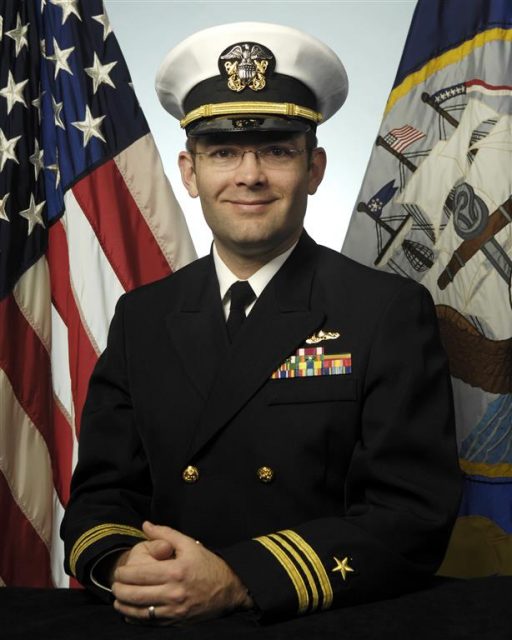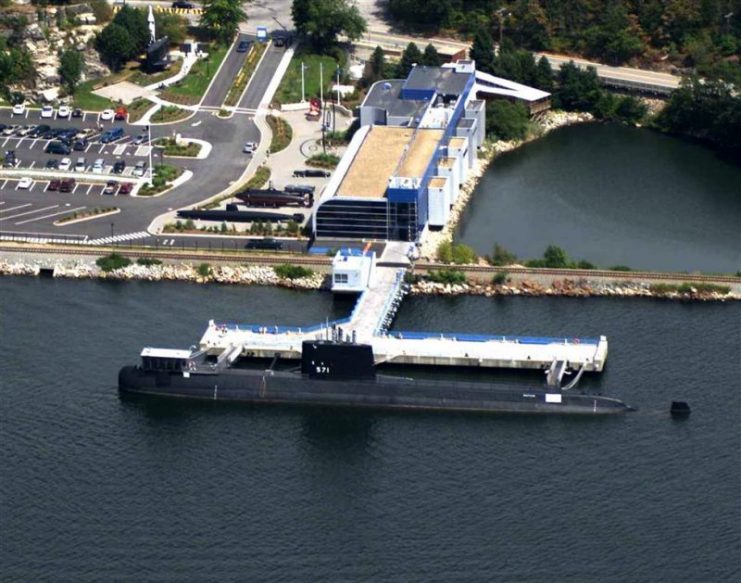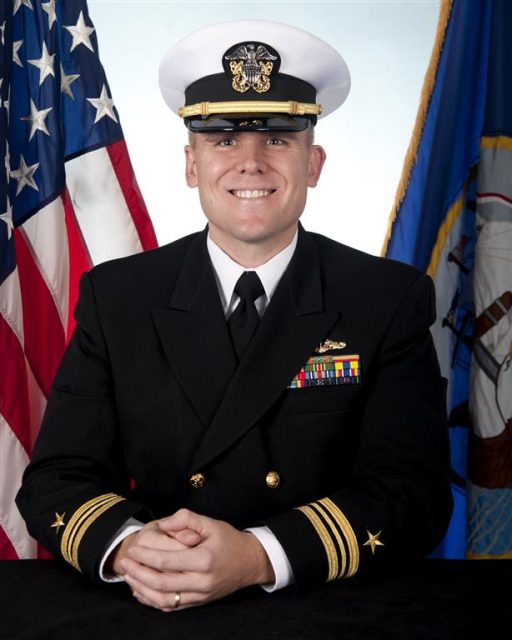Lt. Cmdr. Bradley M. Boyd will relieve Lt. Cmdr. Reginald N. Preston as Officer-in-Charge of Historic Ship Nautilus (SSN 571) and Director of the Submarine Force Museum (HSN/SFLM) Tuesday, Jan. 16, 2018 during a ceremony at the museum.
For Preston, a native of Lyman, Neb., the ceremony marks the end of a remarkable 2-year tour leading the Submarine Force’s historical narrative. That included a number of important achievements.
During his tenure, Preston led a team of experts in rewriting the technical requirements for Nautilus which previously necessitated the ship to be maintained at a level nearly commensurate with operational submarines. Preston’s revised requirements not only allowed for cost-wise upkeep and maintenance at a level that preserves Nautilus for future generations, but did so with the expectation the ship would continue to host more than 150,000 visitors annually. This approach saves the taxpayers more than $100 million over the next 30+ years and allows the Navy to continue to responsibly operate the ship as a National Historic Landmark. During her commissioned service, Nautilus was the world’s first nuclear powered submarine and the first submarine to reach the North Pole as President Eisenhower’s response to the USSR Sputnik program. She served 25 years before conversion to a museum ship and designation as the State Ship of Connecticut, the only nuclear powered warship open to the public.

As the leader of the Submarine Force’s historical narrative, Preston oversaw the development of a commemoration and ceremony honoring a century of the submarine service in the state of Connecticut. In cooperation with local and state organizations, the commemoration paid tribute to Connecticut’s New London Naval Submarine Base, the nation’s oldest continental submarine installation, and the Navy’s Submarine School, both established in 1916. The Association of Defense Communities took note of the commemoration and ceremony and later recognized the region as a “Great American Defense Community” for this and other measures of significant support provided to the area’s military.
Working closely with local political and business leaders, Preston was instrumental in laying the groundwork to establish a future water taxi dock at the museum. As one of almost 20 historic and cultural sites on the banks of the Thames River, the Submarine Force Museum is one of four anchor sites in the Thames River Heritage Park. When fully operational, the Thames River Heritage Park water taxi will transport visitors to ‘anchor sites’ down river where the taxi is already running during summer months. Related, he oversaw the complete ‘revisioning’ of the museum built on feedback from the community and retired submariners to take the museum into its second 30 years of operation. His efforts will help highlight the ‘Submarine Capital of the World’ and the region’s long contribution to national defense.

Preston’s next tour will be as the Director of Submarine On-Board Training at Naval Submarine Base New London, overseeing production and development of training provided to the entire U.S. Navy submarine fleet.
As the officer-in-charge, Boyd comes to Nautilus with a great deal of experience and training. A native of Cincinnati, Ohio, Boyd is a 2004 graduate of Ohio State University. He has also earned a master’s degree in national defense and strategic studies from the Naval War College and an executive master’s degree in business administration from the Naval Post Graduate School. Boyd has also served two tours at sea aboard the Los Angeles-class fast attack submarines USS Dallas (SSN 700) and USS Bremerton (SSN 698).

The Submarine Force Museum is part of the Naval History and Heritage Command’s network of ten museums and has a staff of 30 military crew members representing almost every job rating on board a submarine. The museum is also supported by eight civilians managing the museums more than 20,000 artifacts and 22,000 linear feet of archival records. Located on the Thames River in Groton, Conn., the museum maintains the world’s finest collection of submarine artifacts. It is the only submarine museum operated by the U.S. Navy, and as such is the primary repository for artifacts, documents and photographs interpreting the service and sacrifice of American submariners for visitors from around the world. The museum traces the development of the “Silent Service” from David Bushnell’s Turtle, used in the Revolutionary War, to the Ohio and Virginia class submarines.
Naval History and Heritage Command
